In this article, we’re going to look at how many pupils are educated off-site and engaged in an approved educational activity.
This covers a range of supervised educational activities that pupils undertake instead of going to the school at which they are registered. Department for Education guidance lists the following examples:
- attending taster days at other schools
- attending courses at college
- attending unregistered alternative provision arranged or agreed by the school
All pupils undertaking the activities above would be recorded as code B in the attendance register of their school and treated as present (attending) for the purposes of attendance statistics[1]. In other words, it cannot be inferred from attendance data alone what sort of provision a pupil is attending if recorded as code B. However, this is due to be recorded by schools from the start of next year.
We last looked at the prevalence of off-site education last year.
This time we analyse data for the Autumn and Spring terms of 2023/24, again using data collected from almost 10,000 schools which subscribe to FFT Attendance Tracker.
Overall rate
Prevalence of off-site provision is highest among pupils in Year 11. However, it is a relatively rare event. On average, less than 1% of Year 11 pupils were being educated off-site each day during the first two terms of the year.
We assume the small spike among Year 6 pupils is due to taster/ transition days.
If we were to scale the above figures up to the national population of compulsory age pupils, then there would be around 21,000 pupils being educated off-site each day on average.
Disadvantage
Among secondary-age year groups, disadvantaged pupils are more than twice as likely as other pupils to be educated off-site.
Special Educational Needs
Pupils with EHC plans were more likely than other pupils to be educated off-site. Among secondary aged pupils, pupils with EHC plans are 12 to 13 times more likely to be educated off-site than pupils with no recorded special educational needs.
This has also has to be seen alongside higher rates of absence for pupils with EHC plans.
Pupils regularly educated off-site
As previously, we try to identify pupils who are regularly educated off-site. Using the data for the Spring term, we count the number of weeks each pupil is educated off-site for at least one session. Pupils who are educated off-site for at least one session for at least four weeks are considered to be regularly educated off-site.
Over 2% of Year 11 pupils (we estimate around 13,000 pupils) were regularly educated off-site in the Spring term. Across all year groups, we estimate that around 47,000 pupils were regularly educated off-site in the Spring term.
As shown below, secondary aged pupils regularly educated off-site are more likely to be educated off-site than they are to be present at their school.
In the Spring term, secondary aged pupils regularly educated off-site were educated off-site for 41% of sessions. They were absent for 31% of sessions (compared to an average absence rate of 10% for other pupils) and present at their school for 24% of sessions. For the remaining 4% of sessions they were recorded as undertaking other off-site activities classified as attending in statistics. These include work experience, interviews and late (before the register closed).
Summing up
Being educated off-site is a relatively rare event. On any given day in the Autumn and Spring terms of 2023/24, around 21,000 pupils were educated off-site. Rates were highest among older pupils, particularly those who are disadvantaged or who have EHC plans.
However, this doesn’t give a sense of how many pupils are educated off-site at any point during a term. We estimate that in the Spring term, around 47,000 pupils would have been regularly educated off-site.
Those regularly educated off-site are more likely to be educated off-site than attend the school at which they are enrolled.
- Unless the off-site provider or school notifies the pupil’s school of their absence, in which case the school will record the appropriate absence code rather than code B
Want to stay up-to-date with the latest research from FFT Education Datalab? Sign up to Datalab’s mailing list to get notifications about new blogposts, or to receive the team’s half-termly newsletter.






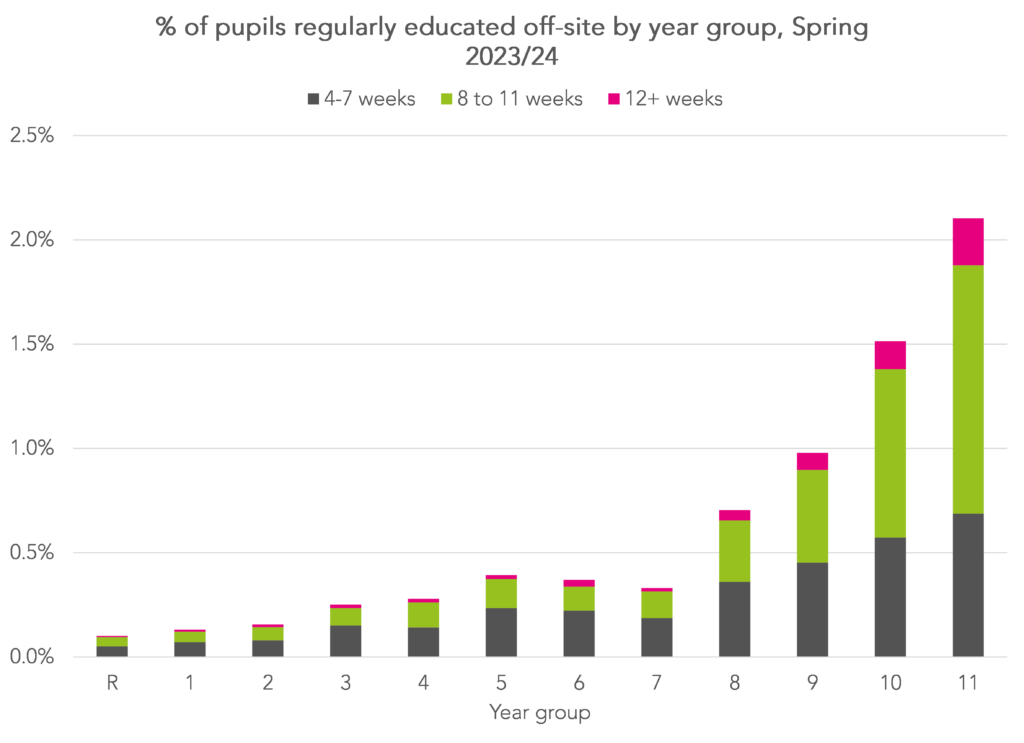

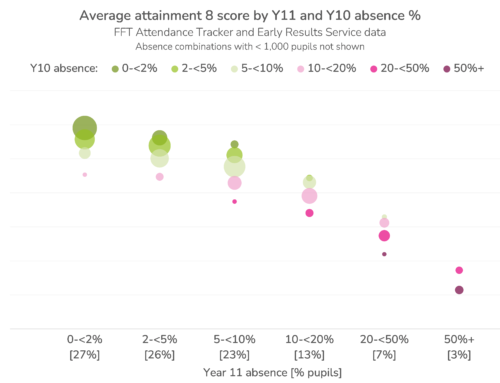
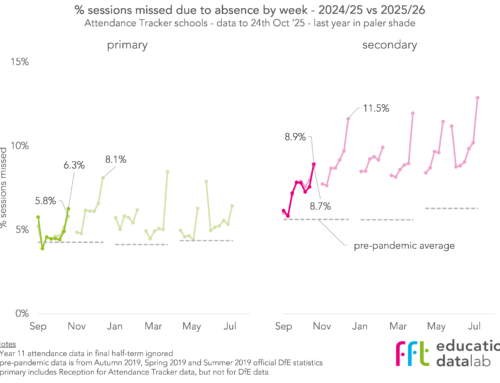
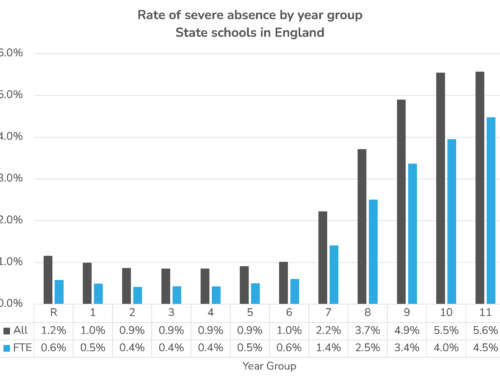
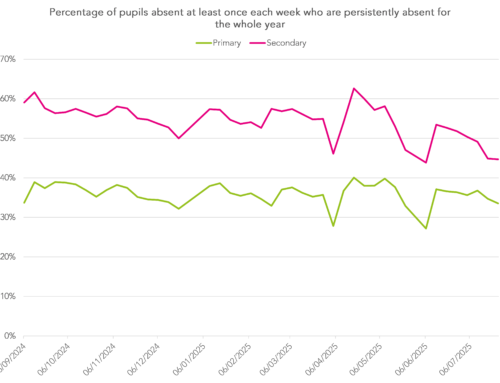
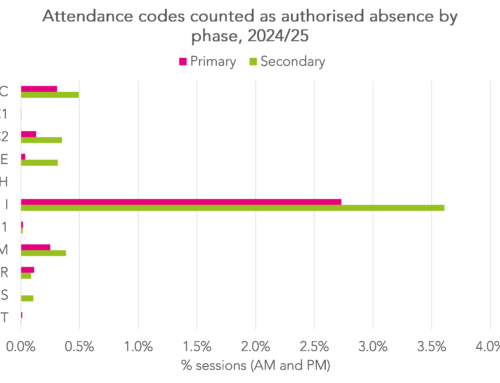
Leave A Comment